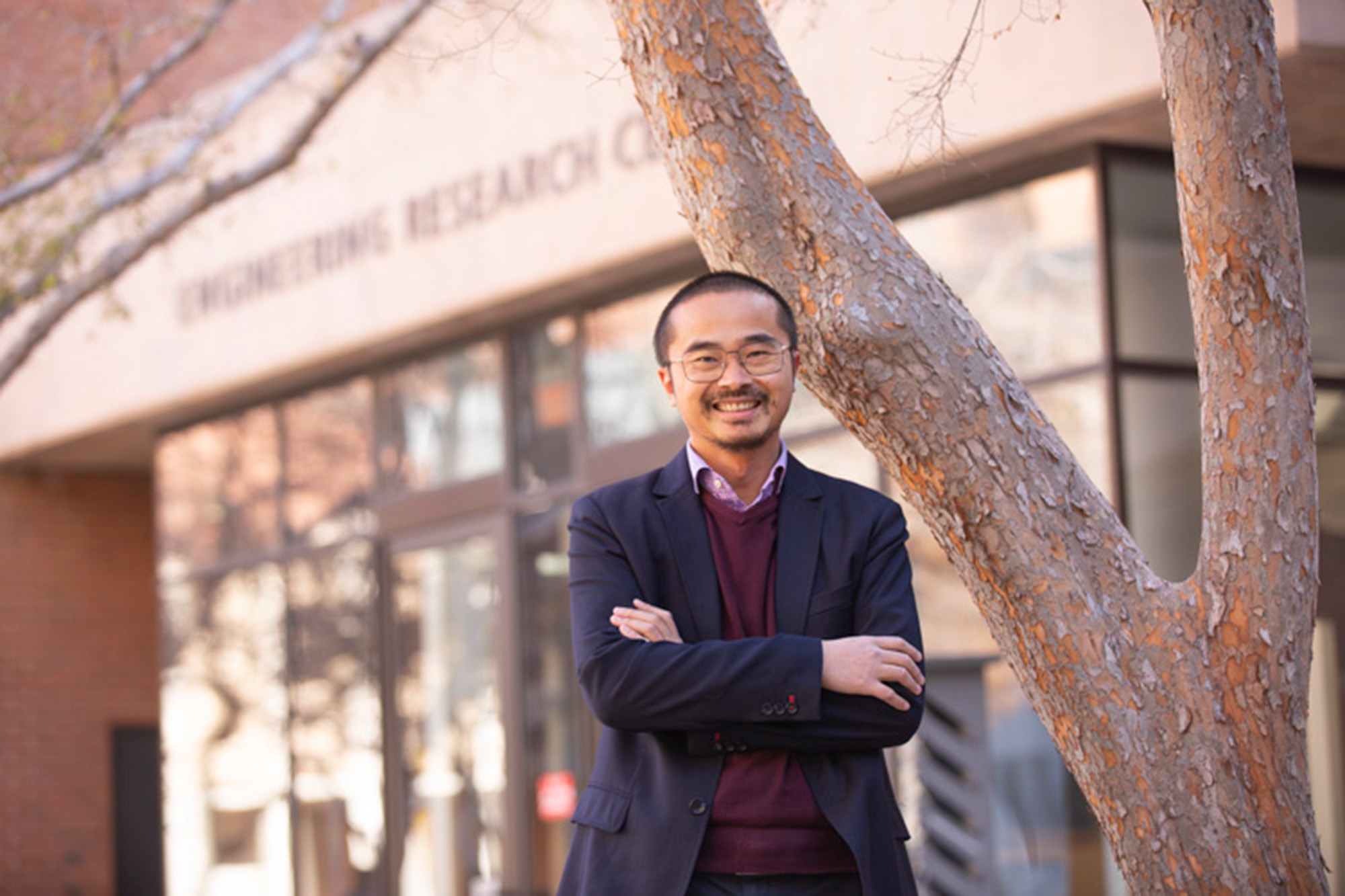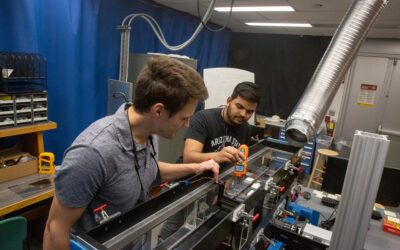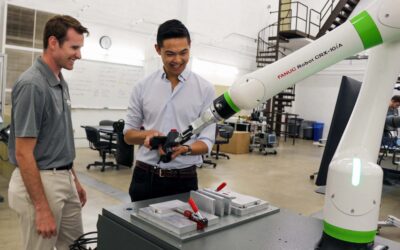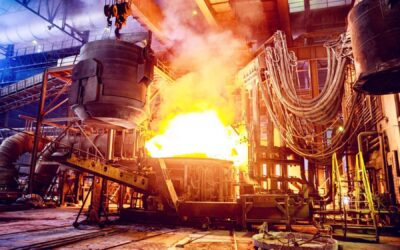When quantum computing meets alloy design
An NSF CAREER award will support Fulton Schools Assistant Professor Houlong Zhuang’s work to further steamline alloy design process
By Hayley Hilborn
February 24, 2023

Although research alloy design and artificial intelligence has been ongoing for decades, Houlong Zhuang is now combining the two fields to forge a new path forward for materials scientists.
Zhuang’s vision is quickly gaining traction. In fact, the first research article he published about incorporating the use of artificial intelligence to design alloys has already been cited nearly 250 times since 2019.
The National Science Foundation, or NSF, grants the Faculty Early Career Development Program, or CAREER, award to early-career faculty members who have the potential to serve as academic role models in research and education and to lead advances in the mission of their department or organization.
Zhuang has been awarded a $537,000 CAREER award from the NSF to pursue this research in alloy design and quantum computing in his project, “Developing Quantum Algorithms for High-Entropy Alloy Discovery.”
Alloy design involves the development of materials made with various metals blended together to create an ideal structural composition. Quantum computing operates by using the subatomic particles in physical matter to store information, then leverages this behavior using specialized hardware. The data drawn from quantum computing can be used to develop methods to mathematically describe the interactions between atoms.
When developing a new alloy, there are a number of elements on the periodic table to consider. Researchers must evaluate which elements will bond most effectively together, and what molar ratios atomically bond to produce optimal results. The possibilities are nearly endless.
Zhuang’s CAREER award project will build on his work combining alloy design and quantum computing to create quantum algorithms that aid researchers in developing new materials.
These algorithms will be implemented using quantum hardware that produce the simulations of the bonds between select elements to predict the best possible combinations of elements to achieve a given material property. Researchers can then conduct experiments to validate if these predictions are correct.
As an assistant professor in the School for Engineering of Matter, Transport and Energy, Zhuang has collaborated with other researchers in the Ira A. Fulton Schools of Engineering and the ASU Quantum Collaborative to use quantum computing to answer questions about atomic interactions in a given chemical composition.
“This project aims to search for a ‘materials genome’ for alloy design using state-of-the-art quantum computers.” Zhuang says. “We are looking forward to identifying promising materials candidates that are suitable for sustainable energy applications like the future hydrogen economy.”
In late 2022, Zhuang was also honored with a Materials Today Rising Star Award and two research fellowship awards from Scialog and the International Association of Advanced Materials.
Zhuang joined Scialog, sponsored by the Research Corporation for Science Advancement, an institution dedicated to breaking down barriers and building community between academic disciplines. With collaborators Yayuan Liu of Johns Hopkins University and Chibueze Amanchukwu from University of Chicago, he was awarded a $55,000 grant to conduct the research project titled, “Surface charge-induced CO2 solvent regeneration via free volume manipulation.” Zhuang will run computational simulations investigating the mechanisms of ionic liquid molecules on charged surfaces for reversible capture and release of carbon dioxide.
Zhuang’s progress in alloy design earned him a second fellowship from the International Association of Advanced Materials, or IAAM. The notable distinction that IAAM confers upon researchers recognizes their important contribution to the advancement of materials science.
Early in his career, Zhuang’s contributions also included developing curriculum for courses he taught in machine learning and quantum computing to help prepare the next generation of engineers to further expand the boundaries of artificial intelligence and quantum computing. His CAREER award will enable him to continue these pursuits by providing training through workforce development programs, graduate outreach programs and mentorships for high school students. Zhuang also plans to enhance collaborations in quantum computing and AI between African and U.S. physicists through exchange opportunities.
Fulton
Researcher
Houlong Zhuang
Assistant Professor
School for Engineering of Matter, Transport and Energy
More ASU Engineering News
Textured materials ensure smooth flight
Assistant Professor Gokul Pathikonda is testing aerodynamics of novel surface textures to improve maneuverability of aircraft for the Air Force Office of Scientific Research
18 ASU undergraduates selected for German research fellowship
Several engineering students received the fellowship and additional funding from the Fulton Schools
Millions invested in new capabilities
Labs across ASU’s Polytechnic campus are getting an upgrade — millions of dollars in industry-grade equipment to amplify students’ career readiness
ASU to lead new DOE Clean Energy Manufacturing Innovation Institute
‘EPIXC’ seeks to eliminate industrial use of onsite fossil fuels for process heating



